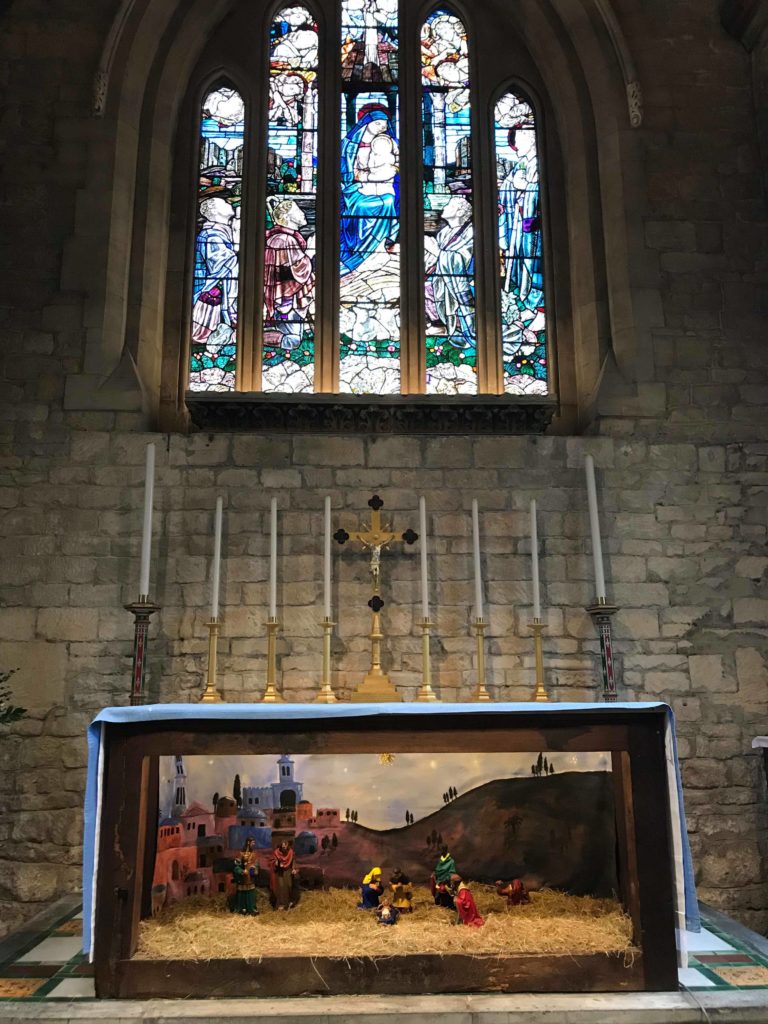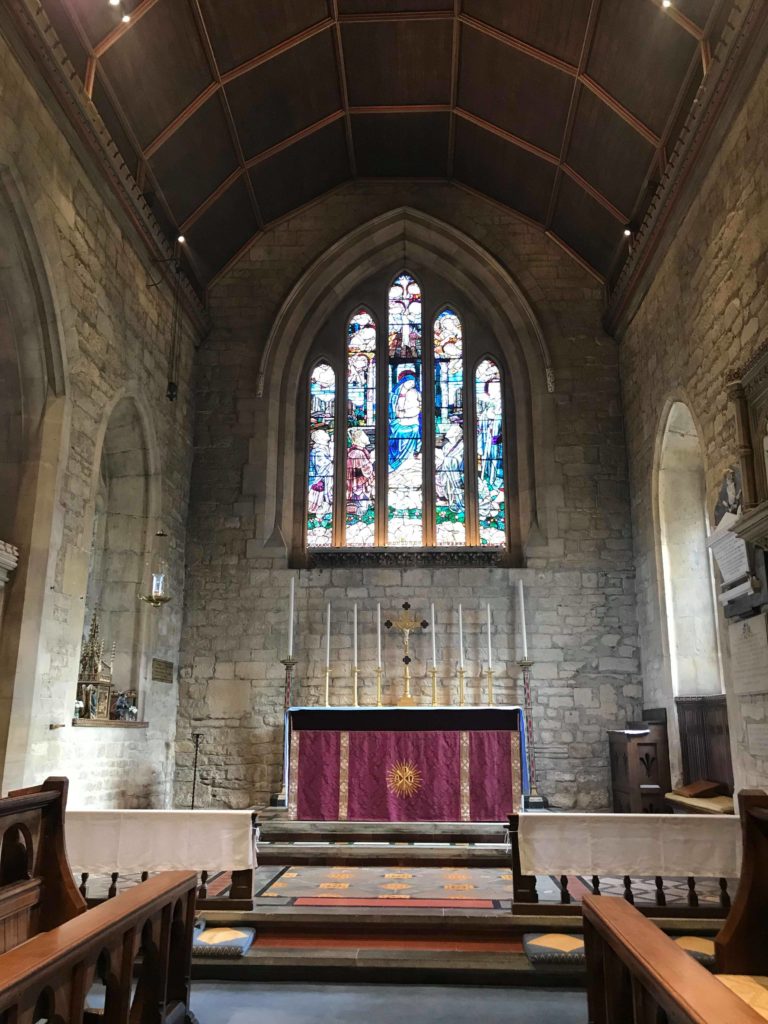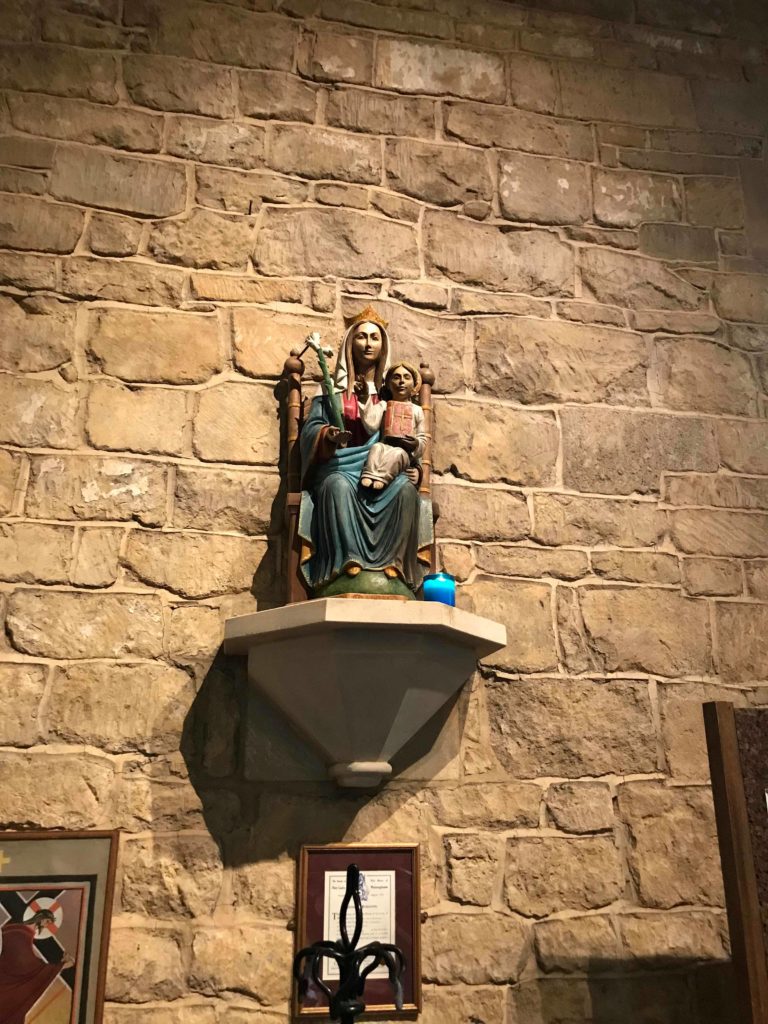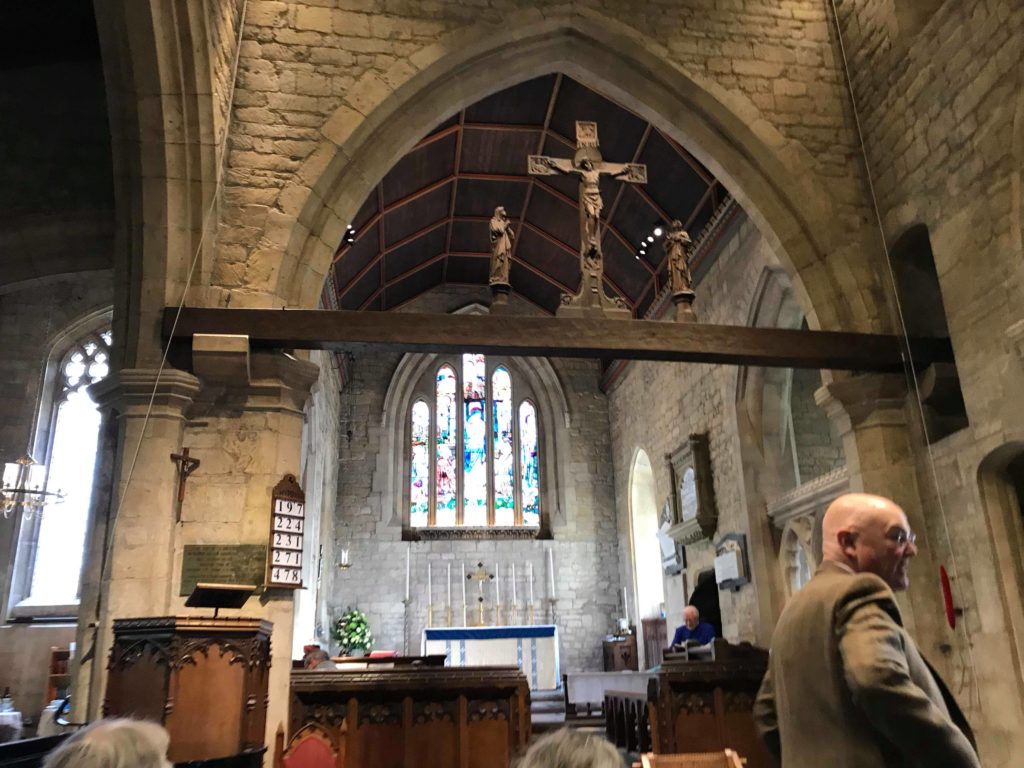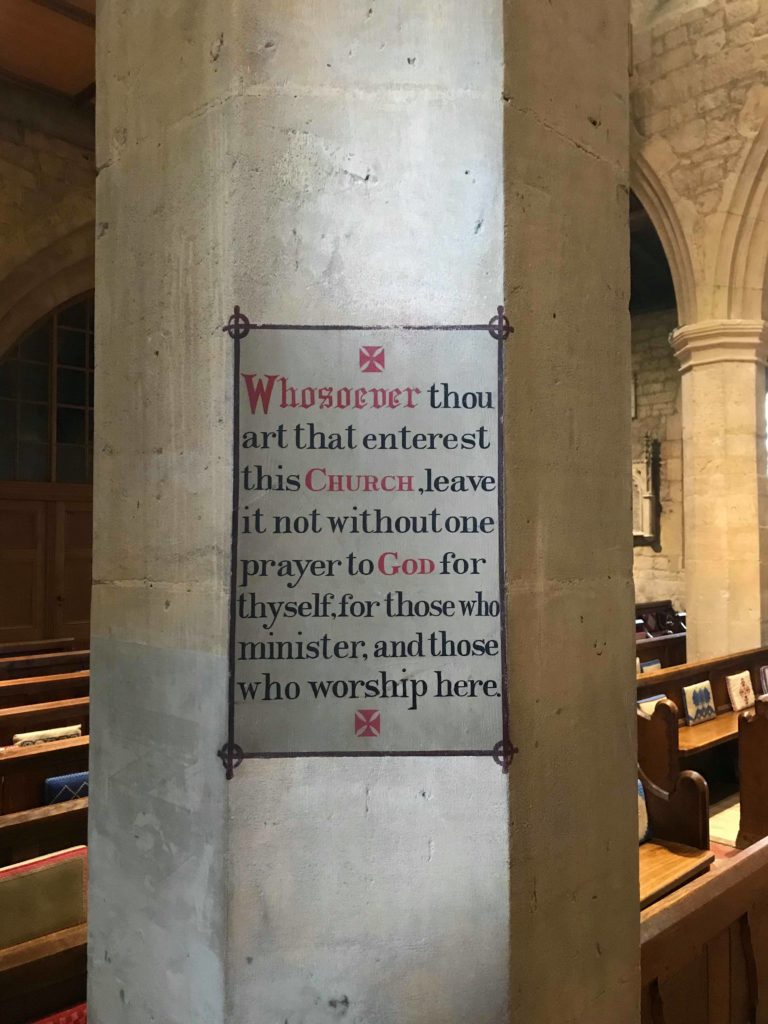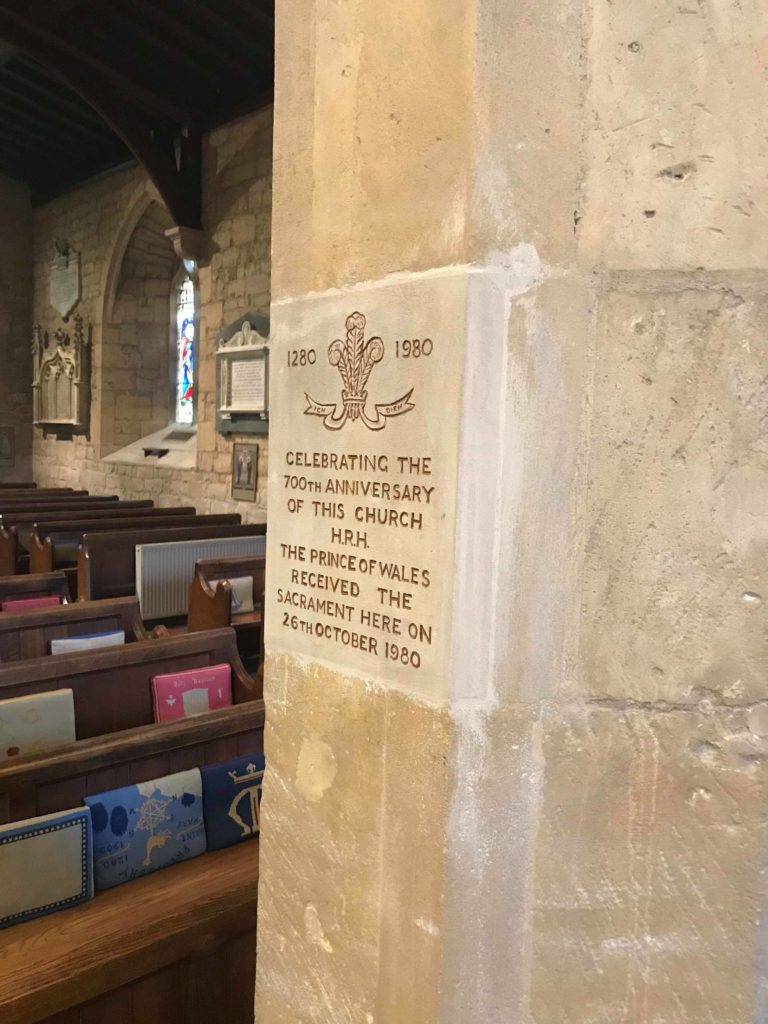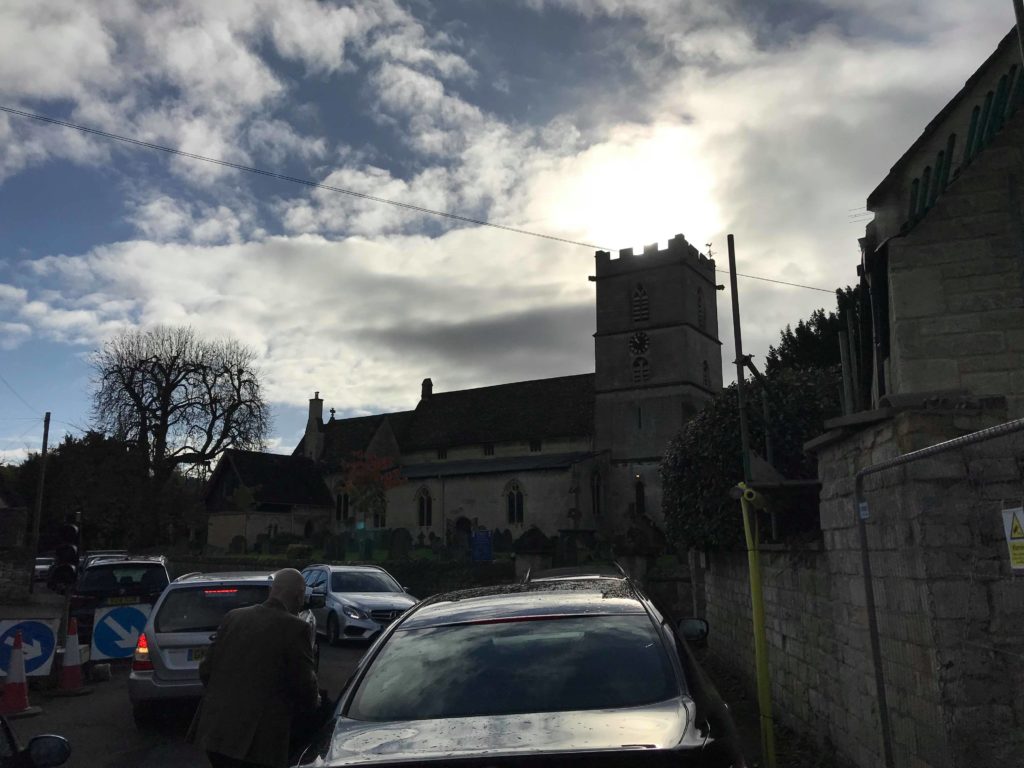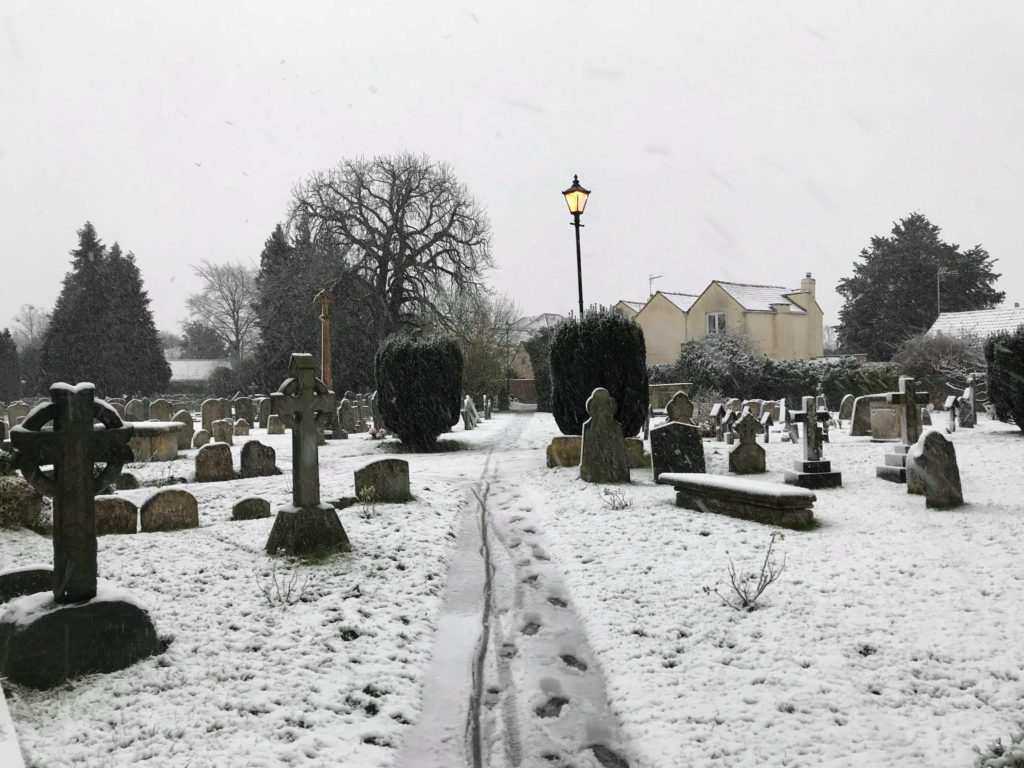I knew St. Mary’s would be my spiritual home for the academic year from the moment I first visited the parish. Located in Prestbury, a village just outside of Cheltenham, the English town I am spending this year studying abroad in through BCA, St. Mary’s feels the most like home of any of the churches I visited while in the UK. A friendly, welcoming parish nestled near the edge of the surrounding countryside, to me St. Mary’s wouldn’t feel out of place among the rural Brethren congregations of my childhood and college experience at Manchester University. This may come as a surprise for a lifelong Brethren to say, considering St. Mary’s is firmly entrenched in the smells and bells, high church, Anglo-Catholic wing of the Church of England.
While I recently learned of a couple of Brethren house churches in London started by the Iglesia Evangelica de los Hermanos or Church of the Brethren in Spain, there is very little Anabaptist, let alone Brethren, presence in my area of the country. While I’m used to people not having heard of our small denomination before, I quickly found that my old standby of “we’re kind of like the Mennonites,” when explaining who we are wasn’t particularly helpful for people who have never heard of the Mennonites either. (Not that I’m particularly satisfied with that explanation anyway.) There are some churches that call themselves Brethren in the area, but based on my (admittedly not particularly strenuous) research they appear to be part of a different Brethren group (the Plymouth Brethren) that traces its origin to nineteenth-century Ireland rather than eighteenth-century Germany. This, combined with my desire to explore a different tradition while abroad, is how I ended up worshiping with the Church of England.
I was startled and amazed to discover the sheer diversity within the Church of England. I had visited a couple of Episcopalian churches in the US, and have semi-frequently attended Zion Lutheran church in North Manchester, Indiana while in college, and assumed most of the Anglican churches in the UK would have similar services. You might be able to imagine my reaction when the first two churches I visited turned out to be extremely low church charismatic. I had thought my home congregation of Union Center COB was fairly low church and modern, but compared to these congregations it seemed, if not high church, at least middle of the road. (When describing a standard service back home to a friend who attends one of these churches they remarked it sounded very traditional.) They were quite friendly, but I simply prefer a little bit more structure to a worship service. The next parish I visited had a service much more similar to what I was used to, and I thought I might end up there, but I wanted to visit at least a couple more churches before I made a decision. The next CofE parish I visited’s Sunday Mass was higher than most Roman Catholic services I’ve attended. While they did have a female deacon, somewhere there is a document saying a woman cannot officiate the Eucharist at their altar, and they have been entrusted to the care of one of the Church of England’s “flying bishops.” (On a side note, I was happy to discover the bishop of the local diocese of Gloucester, Rachel Treweek, is the first female diocesan bishop in the Church of England, with previous female bishops in the denomination having been suffragan or assistant bishops.)
I attended St. Mary’s for the first time basically by accident. I had looked online and seen it was the parish my residence hall was located in and figured I would visit at least once just to say I had but was not expecting to seriously consider attending. The Sunday I first worshiped there I was planning to go back to the church I had attended the previous week. The campus chaplain had offered to drive me into town for church, and I was supposed to meet up with her that morning; however, I set my alarm for pm instead of am and just missed her. By the time it would have taken me to walk where I was planning to go, the service would have already started. On the other hand, I recalled seeing St. Mary’s service was to start about half an hour later, which would give me plenty of time to walk to the church and introduce myself before it started. While walking through Prestbury to the church, I was struck by how much the surrounding area reminded me of the small Indiana farm towns in which I had grown up. I meet with a variety of friendly faces, and I knew when I sat in the pew before my first service there that I would be coming back to this parish.
Being a college student and not a morning person, I usually attend the 11 ’o clock service at St. Mary’s, its third service of the day. It, while not quite as high as the other Anglo-Catholic church I visited, is a traditional, high church Anglican service, with incense, candles, a priest dressed in full vestments, a robed choir accompanied by an organ, and communion at the altar rails every Sunday. There has been a female priest officiating a few times while I’ve been attending. While not everyone makes the sign of the cross or kneels for prayer, both practices are certainly present. The congregation for this service tends to skew older, though there are two other Sunday services: an eight o’ clock spoken Eucharist which I attended once and is very similar to the 11 o’ clock service, except without a choir or music, and the 9:30 Celebrate! Service, which I have not yet attended, but as I understand is more contemporary and tends to attract more young families.
The parish follows the Church of England’s Common Worship liturgy, which can be found on their denominational website if you are interested in looking at the text. Aside from the obvious outward tapings of high church worship, for me, the biggest differences between this style of service and what I grew up with is the placement of the sermon, particularly concerning the celebration of the Eucharist, and the recitation of the creed. Because communion is celebrated every Sunday, it naturally forms the high point of the service. This means the sermon, which I would identify as the high point of most Brethren services I’ve attended occurs much closer to the start of the service. Also, there usually three or four scripture readings from throughout the Bible each service, rather than focusing on a single text. Granted, they are related in theme and topic, and the priest usually only focuses on one or two of them in their sermon. One part I still debate with myself about is the recitation of the Nicaean Creed at the start of the Eucharistic portion of the service. It is not that there is anything in the text of the creed that I disagree with or think most Brethren would but given our denomination’s traditional insistence on “no creed but the New Testament” I still feel a little bit conflicted as to if I should say it or not. Nevertheless, so far I have decided to recite it with the rest of the congregation while worshiping within the Anglican tradition as I recognize the importance it has played in the lives of many of our fellow Christian brothers and sisters as a statement of faith for over a thousand years.
Despite my very different background, both nationally and spiritually, the congregation of St. Mary’s has welcomed me into their community with open arms. I have gotten to know several members of the church over a cup of coffee or tea after the service and made welcome and at home. This semester I hope to get a bit more involved in the life of the parish, as I have been invited by multiple members of the choir to practice, and am thinking of asking to be an altar server for a few services in the coming months. In all, one of my favorite experiences at St. Mary’s happened just a couple of weeks ago at their annual Epiphany supper. While the holiday commemorating the visitation of the magi to the Christ child was also celebrated the next Sunday, on the actual night of every year, they hold a special traditional Evening Prayer service out of the 1662 Book of Common Prayer followed by a congregational meal. While not a potluck, it certainly had the same feeling of a community coming together around food, and I enjoyed getting to know some older members of the parish, as well as meeting a guy about my age home for the holidays who’s studying at Oxford. I am glad to have become a part of this community for a short time and feel through this I have grown in my relationship with God. It will certainly be bittersweet when I leave for home in June.
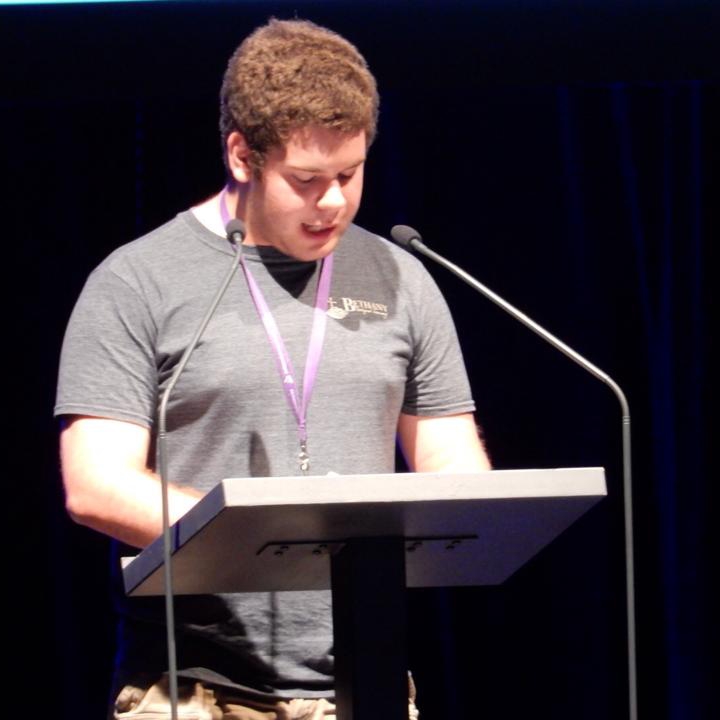 Nolan McBride is a religious studies major at Manchester University and a member of Union Center Church of the Brethren in Napanee, Indiana. He is studying abroad at the University of Gloucestershire through Brethren Colleges Abroad.
Nolan McBride is a religious studies major at Manchester University and a member of Union Center Church of the Brethren in Napanee, Indiana. He is studying abroad at the University of Gloucestershire through Brethren Colleges Abroad.


